
Chimney Cleaning and Inspections
Masonry Chimney Re-lining
Wood Stove and Fireplace Insert Expert Installation
Over 30 years experience as certified technicians
for chimneys and fireplaces or wood stoves
in Santa Fe and northern New Mexico
CHIMNEY CLEANING
A chimney fire can be quite spectacular—with loud popping and cracking sounds, lots of dense smoke and a strong, hot odor. But chimney fires aren’t always dramatic enough to alert the neighbors. Sometimes, they burn slow and aren’t even visible, but they still reach high temperatures and can seep into the walls of your house and ignite anything flammable. Flames from a chimney fire can quickly spread into the walls or onto the roof of your home and cause massive devastation, if not the total destruction of your home. It is a nightmare scenario, but one that can most likely be avoided with proper care and maintenance of your chimney.
The most common cause of chimney fire is, simply, a dirty chimney. Over time, chimneys will become clogged with creosote, a natural, tar-like substance that is a by-product of burning wood. Creosote is black or brown in appearance and, over time, it builds up and leaves a glazing inside your chimney. This glazing is highly combustible and it can take only a small amount to start a fire. Restricted air supply is one of the factors that contribute to the build up of creosote, another reason it is important to clean your chimney regularly.
When a chimney is not regularly cleaned, soot will accumulate around the flue. This makes it difficult for the flue to draw the smoke upwards and can cause the smoke to enter your room. This soot will leave a black film around your hearth and soil any furniture, carpeting or decorations nearby. Sometimes, smoke can even cause black staining around your chimney, which can be difficult or impossible to remove.
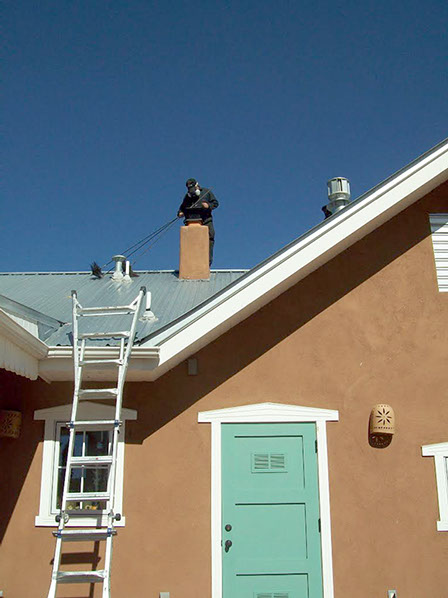
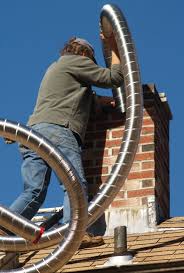
FIREPLACE FLUE
RE-LINING
When the existing flue liner inside the chimney is damaged by a flue fire or deteriorates due to exposure to weather, the chimney becomes a fire hazard and should not be used until it has been repaired by a certified chimney professional. The existing flue must be relined with a UL1777 listed stainless steel flue liner. The rigid stainless steel liners or the flexible stainless steel liners act as a sleeve inside the chimney to protect combustible materials from extremely high flue gas temperatures.
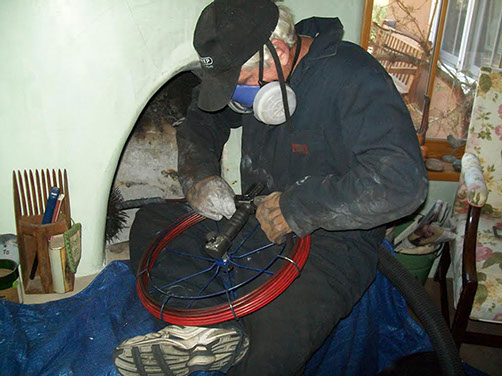
WOOD STOVE AND INSERT INSTALLATION
There’s a romance attached to wood stoves that folks don’t feel for their gas or oil furnaces. The reasons include economics, aesthetics, efficiency and environmental concerns. Today, wood stoves offer homeowners the promise of a heating system that’s independent of local utilities, plus the lure of cozy evenings cheered by gently flickering flames.
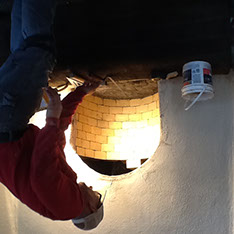
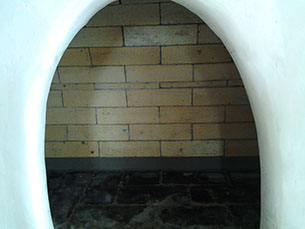
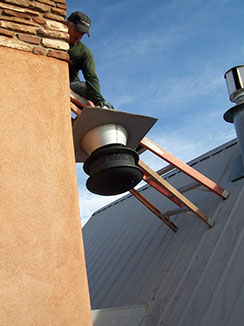
PARGING OF A FIREPLACE
A parge coat is a thin coat of a cementitious or polymeric mortar applied to concrete or masonry for refinement of the surface. The typical parge coat is 1/4"-1/2" in thickness; this may be less than the minimum thickness allowed by many mortar types.
This technique is very effective for repairing adobe fireboxes!
FIREBOX REBUILD
When a chimney sweep inspects your fireplace and chimney, the purpose is to identify and repair breaches in the safety of the unit. However, you may not even need a professional to tell you that the firebox has fallen into serious disrepair. If the bricks in the firebox are crumbling and the mortar joints have obviously deteriorated, you’ve got a fire hazard in your home.
The extreme temperatures created by roaring fires demand that special firebricks and high-temperature refractory mortar be used in the construction of the firebox. It’s only normal for repair to become necessary after many years of use. But when it happens, no time should be wasted in getting a firebox repair before continuing to use the fireplace.
CHIMNEY CAP INSTALLATION
There are several different type of chimney caps available. The most commonly used cap is called a spark arrestor. Made of stainless steel or galvanized steel. This cap helps to keep moisture out of the flue and also critters. It also helps keeps the sparks from flying out the chimney when burning. These caps are recommended for all fireplaces that currently do not have a cap. There are varying sizes available for purchase and installation
WIND DIRECTIONAL
FLUE CAP
The wind directional flue cap helps when there are strong winds in a particular area. The cap rotates with the wind direction to avoid down drafts of cold air into the chimney.
© 2014 K.C. WESTER, LLC ALL RIGHTS RESERVED 7 AVENIDA VISTA GRANDE, PMB 417, SANTA FE, NEW MEXICO 87508